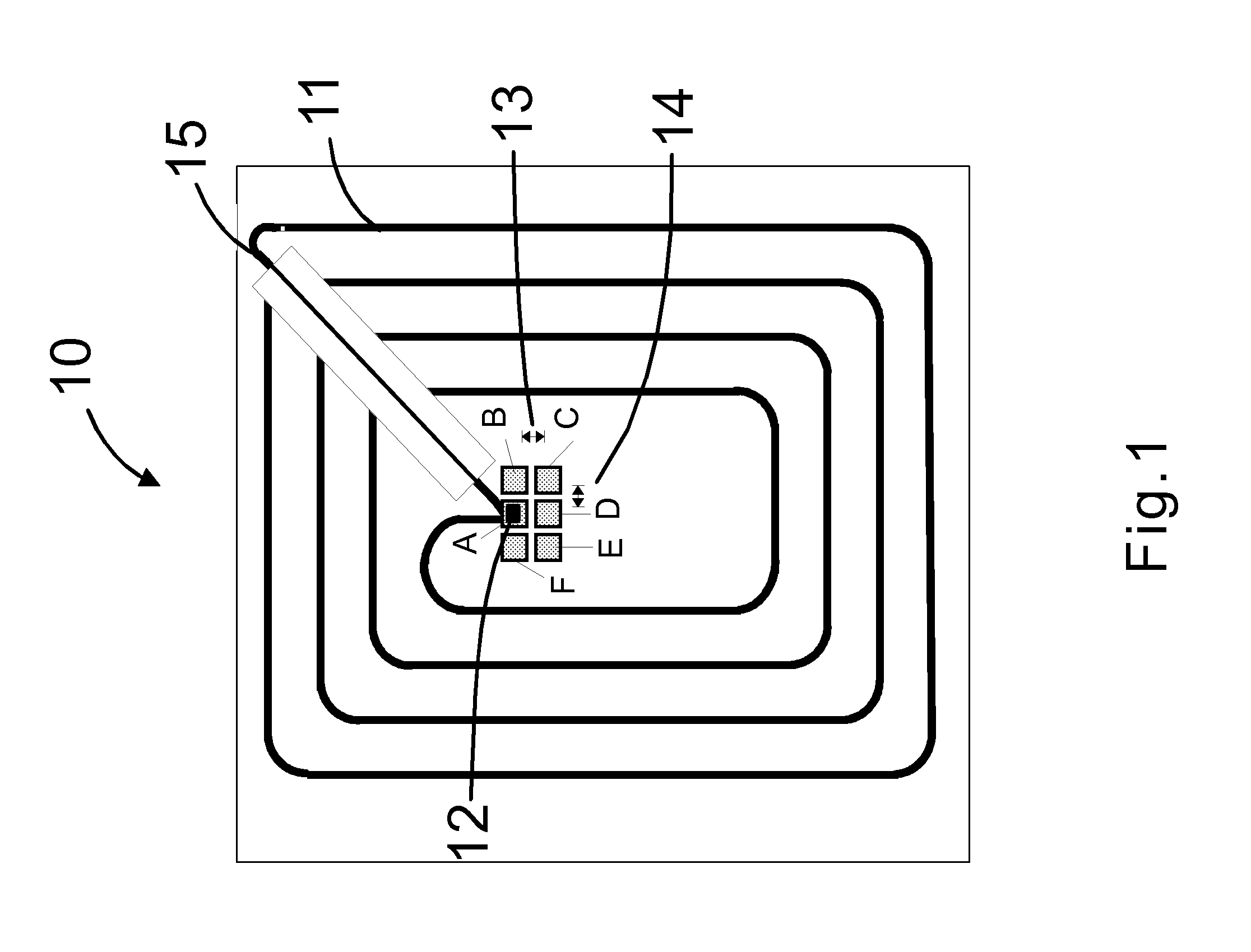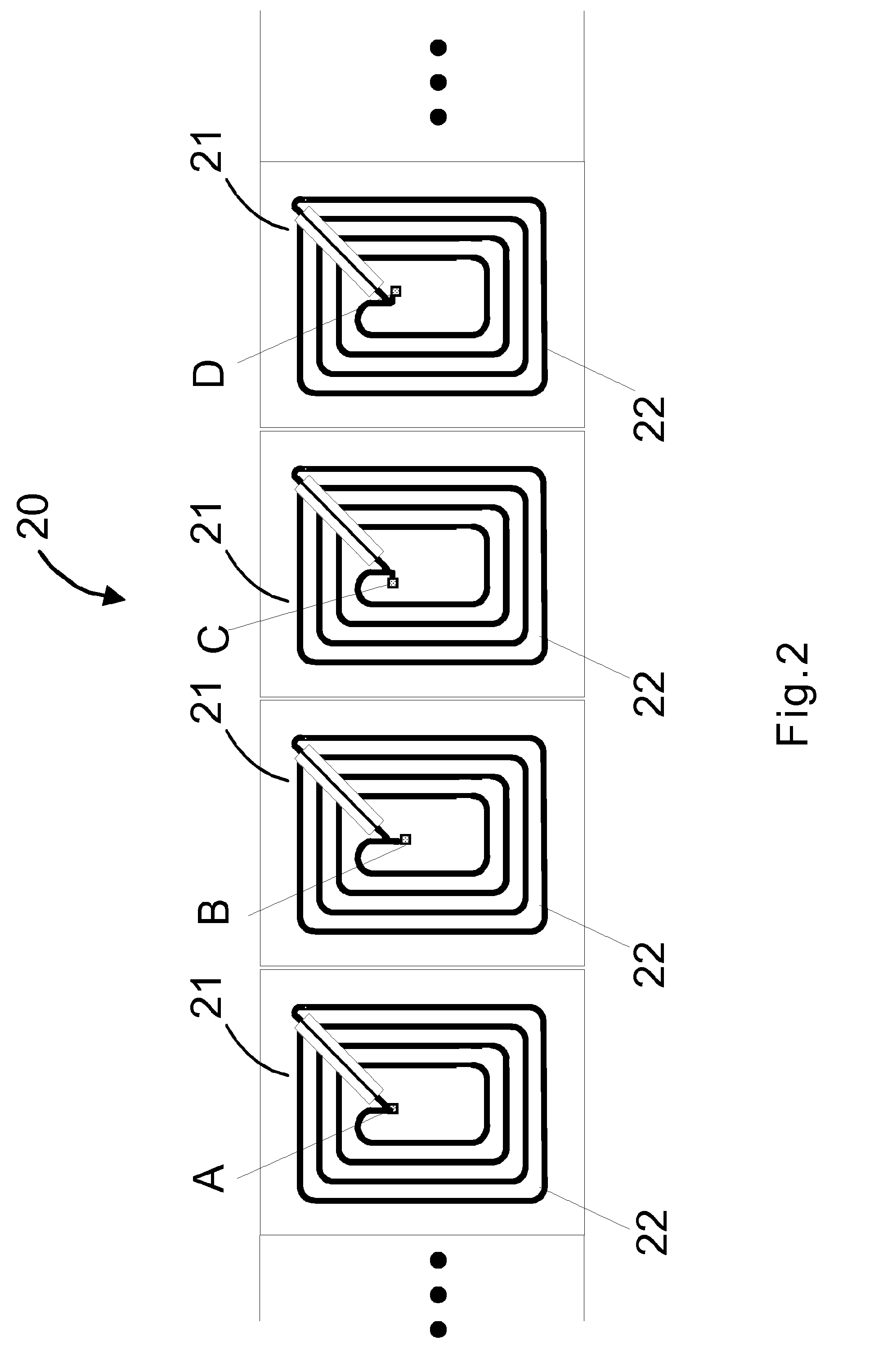Method for producing a rollable web and a rollable web
a technology of rollable webs and webs, applied in the field of rollable webs, can solve the problems of chip failure, expensive solution, and inability to work properly with the chip or the antenna, and achieve the effect of avoiding or at least reducing the stress on the chips and the stacking
- Summary
- Abstract
- Description
- Claims
- Application Information
AI Technical Summary
Benefits of technology
Problems solved by technology
Method used
Image
Examples
Embodiment Construction
[0020]FIG. 1 shows a front view of one embodiment of the invention. A tag 10 comprising an antenna 11 and an integrated circuit on a chip 12 are formed on the surface of a substrate 15. The chip 12 is attached to the position A of the antenna 11. The antenna 11 is designed so that there are five other alternative positions B-F for attaching a chip 12 to the antenna 11. There should be only a minor chance in the longitudinal direction 13 or in the cross-direction 14 between alternative positions A-F. This change 13 or 14 could be for example 0.5 to 1 mm.
[0021]FIG. 2 shows a front view of one embodiment of the invention. RFID tags 21 are formed on a piece of a long belt-like, rollable, and flexible backing web 20. The tags 21 are formed consecutively, and in each individual tag 21 the position A-D of the chip attached to antenna 22 with a predetermined position has slightly changed in respect of the antenna 22, when compared to the other chips.
[0022]FIG. 3 shows a web roll 30. The web...
PUM
| Property | Measurement | Unit |
|---|---|---|
| height | aaaaa | aaaaa |
| mechanical stress | aaaaa | aaaaa |
| thickness | aaaaa | aaaaa |
Abstract
Description
Claims
Application Information
 Login to View More
Login to View More - R&D
- Intellectual Property
- Life Sciences
- Materials
- Tech Scout
- Unparalleled Data Quality
- Higher Quality Content
- 60% Fewer Hallucinations
Browse by: Latest US Patents, China's latest patents, Technical Efficacy Thesaurus, Application Domain, Technology Topic, Popular Technical Reports.
© 2025 PatSnap. All rights reserved.Legal|Privacy policy|Modern Slavery Act Transparency Statement|Sitemap|About US| Contact US: help@patsnap.com



